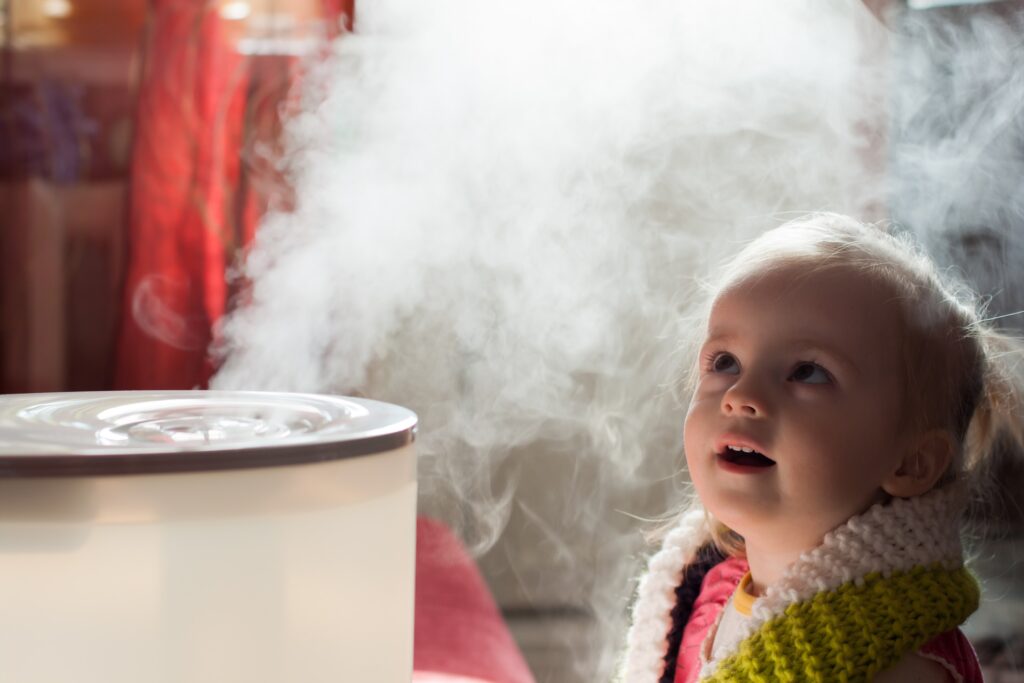Does the air in your home ever just feel… sticky in the summer? In contrast, it might get so dry in the winter that you feel uncomfortable. Keeping the right level of humidity in your air is a delicate balancing act. If your home is too humid or too dry, you may start to notice problems with your health, your furniture, and even your HVAC system. At Hager Fox Heating & Air Conditioning, we’ve helped Lansing homeowners maintain healthy indoor air quality since 1941. We’ve put together this guide to indoor humidity so you can breathe easier all year long.

How Humid Should Your Home Be?
According to the Environmental Protection Agency, the ideal indoor humidity level is between 30% and 50%. In winter, you should aim for around 25% to avoid condensation on windows, while summer levels can rise to about 50%. Excess moisture can lead to mold growth, warped wood surfaces, musty odors, and added strain on your heating and cooling systems. On the other hand, air that’s too dry can trigger dry skin, static electricity, and damage to wood floors or furniture. Keeping humidity in the right range is a simple way to protect your health and your home.
Signs Your Home Has Poor Humidity Control
Here are some common signs that you may need to fix humidity problems in your house:
- Condensation on windows and walls: If you see water droplets forming on glass or drywall, your indoor air is likely too humid.
- Persistent musty odors: A damp, stale smell can be a sign of excess moisture and possible mold or mildew.
- Warped wood or peeling paint: Wood floors, cabinets, and trim can swell or crack when exposed to too much moisture.
- Frequent static shocks: Dry air increases static electricity, which can become constant (and annoying) during the colder months.
- Dry, itchy skin: Low humidity pulls moisture from your skin, leaving it irritated and uncomfortable.
- Increased allergy symptoms: Dust mites and mold thrive in high humidity, which can trigger sneezing and congestion.
How To Humidify Dry Air in Your Home
If your indoor air feels uncomfortably dry, try these tips to add moisture and improve comfort:
- Use a whole-home humidifier: A professionally installed humidifier works with your HVAC system to add moisture evenly throughout your home.
- Boil water on the stove: Boiling water releases steam that raises humidity levels naturally.
- Add houseplants: Many plants release moisture into the air through a process called transpiration.
- Place water basins near heating vents: Warm air will help evaporate the water and increase humidity.
- Air-dry laundry indoors: Hanging wet clothes inside can add moisture to the air.
How to Dehumidify Your Home
When your house feels sticky or damp, these strategies can help you regain humidity control:
- Use exhaust fans: Run fans in bathrooms and kitchens to remove steam and excess moisture.
- Set your AC fan to “auto”: This setting allows moisture to drain outside instead of recirculating through your home.
- Fix plumbing leaks: Even small leaks can contribute to high humidity over time.
- Avoid long, hot showers: Reducing steam can help keep moisture levels in check.
- Install a whole-home dehumidifier: These systems work with your ductwork to pull excess moisture from the air.
- Run your air conditioner: Cooling your home naturally removes humidity and improves comfort.
Call Hager Fox Today for Indoor Air Quality Products in Lansing
Balanced indoor humidity protects your health, preserves your belongings, and keeps your HVAC system running smoothly. From whole-home humidifiers to advanced dehumidifiers, Hager Fox Heating & Air Conditioning has the solutions you need to create a healthier home environment. Our NATE-certified technicians are ready to help you explore your options and install the right system for your needs.
Contact us to talk to a Hager Fox indoor air quality specialist today!




